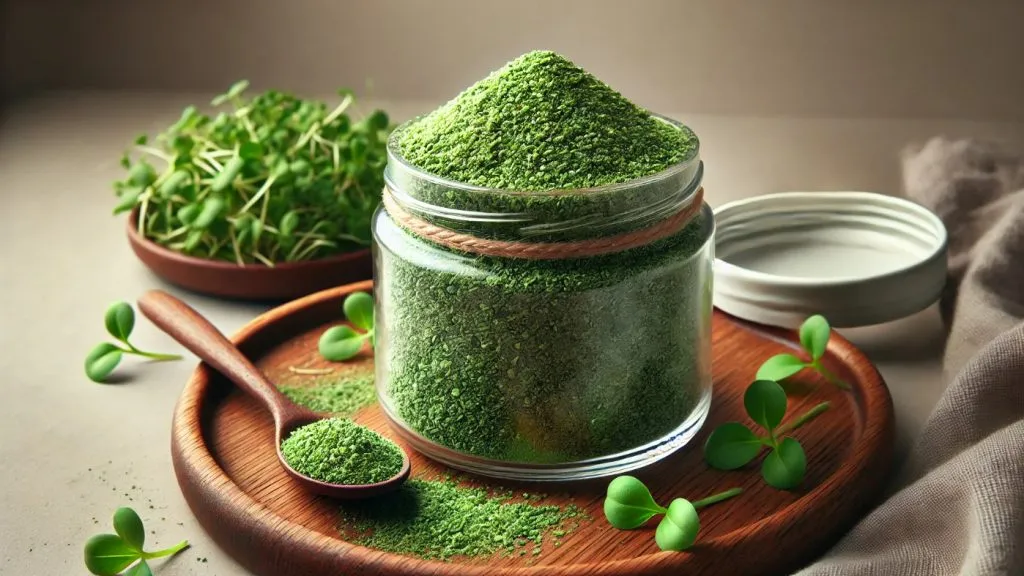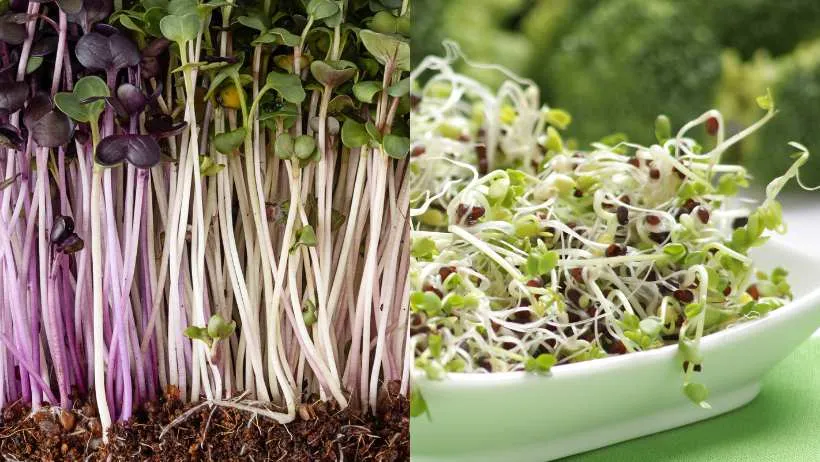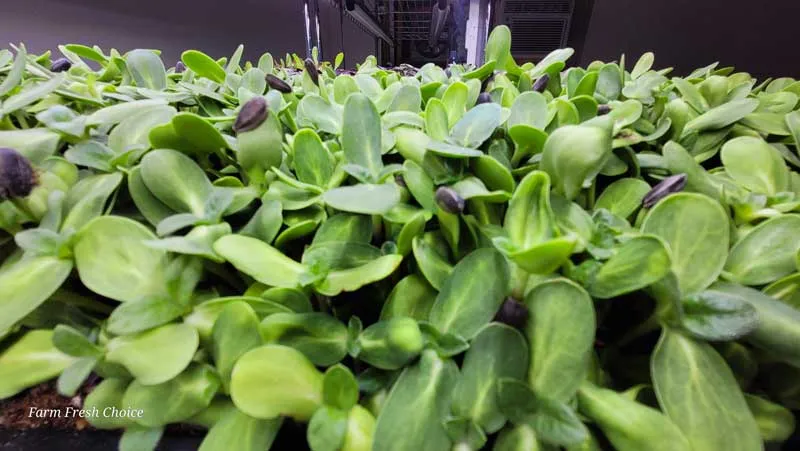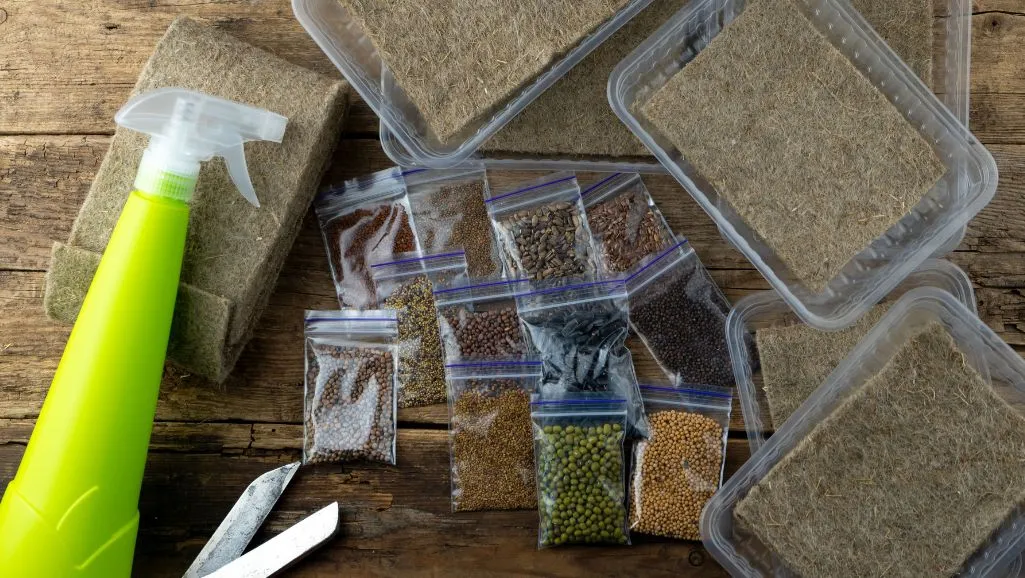Dehydrating microgreens is becoming popular for both its practicality and the unexpected benefits it offers. Microgreens are known for their high nutritional value, but they tend to spoil quickly, making preservation a challenge. Dehydrating microgreens addresses this issue, allowing you to retain their nutrients and extend their shelf life.
In this article, we’ll explore the benefits of dehydrating microgreens, including nutrient retention, longer storage, and versatile uses. Learn why dehydrating microgreens is a great method to keep these healthy greens available long after harvest, making them a staple in your kitchen.
Do Microgreens Lose Nutrients When Dehydrated?
When done correctly, dehydration can actually preserve a large portion of the vitamins, minerals, and antioxidants found in microgreens. The key is using low-temperature drying methods, which help minimize nutrient loss and ensure that these powerful little greens maintain their nutritional value. Some studies suggest that while certain vitamins, like vitamin C, may decrease slightly, the majority of nutrients stay intact.
Compared to other preservation methods, dehydration is particularly effective at maintaining the nutritional value of microgreens, allowing you to enjoy their benefits long after they’ve been harvested.
Prolonged Shelf Life
One of the biggest advantages of dehydrating microgreens is that it significantly extends their shelf life. Fresh microgreens are known for spoiling quickly, often wilting within a week. But once dehydrated, these greens can last for months, even years, when stored properly. This means you can enjoy their nutritional benefits long after their typical fresh lifespan.
The dehydration process removes moisture, which is the main cause of spoilage. Without moisture, mold and bacteria have little chance to grow. Store your dehydrated microgreens in airtight containers in a cool, dark place, and they’ll be ready to add a nutritional boost to your meals whenever you need them. Whether you’re saving them for future use or just trying to reduce food waste, dehydrating microgreens is a practical solution for long-term storage. Check out this post on Dehydrate vs Freeze-Dry Microgreens to learn which on is best for you.
Related Post: How to Dehydrate Microgreens Without a Dehydrator: A Step-by-Step Guide
Nutrient Retention
Dehydrating microgreens isn’t just about making them last longer; it’s also about keeping their nutrients intact. When done right, dehydration methods can preserve important nutrients like vitamins A, E, and K, as well as antioxidants that are essential for your health. Unlike other preservation methods, such as freezing or canning, dehydration retains most of these nutrients, ensuring that your microgreens still provide significant nutritional value even in dried form.
The key lies in the dehydration process itself. Using low heat and slow drying techniques helps protect the delicate nutrients in microgreens from breaking down. This means that, when you’re ready to use them, your dehydrated greens will still offer a strong nutritional boost, whether you’re adding them to a smoothie, soup, or salad. Proper dehydration techniques are crucial, but the payoff is worth it—nutrient-rich microgreens that stay potent and ready to use for the long term.
Easy Storage
Dehydrating microgreens doesn’t just extend their shelf life; it also makes them much easier to store and transport. Fresh microgreens are fragile and bulky, requiring careful handling and plenty of fridge space. But once dehydrated, they shrink down to a fraction of their original size and weight, making storage simple.
The reduced moisture content means they won’t take up much space in your pantry, and they’re perfect for on-the-go nutrition. Whether you’re packing for a camping trip, a long hike, or just want to keep healthy snacks at your desk, dehydrated microgreens are lightweight, compact, and easy to take with you anywhere, without worrying about spoilage or the need for refrigeration.
Versatility in Use
Dehydrated microgreens are incredibly versatile in the kitchen, ready to enhance your meals in various ways. Once dehydrated, these greens can be used in a wide range of culinary applications, far beyond their fresh form. Want to add a nutrient boost to your morning smoothie? Just toss in a handful of dehydrated microgreens. Need to add flavor to your soup, salad, or pasta? Crumble them up as a seasoning.
But that’s not all—dehydrated microgreens can easily be ground into a fine powder, allowing you to create your own microgreens powder at home. This powder can be sprinkled on everything from popcorn to yogurt or mixed into your favorite baked goods for an extra health boost. The concentrated nutrients and flavors make dehydrated microgreens a powerful, versatile ingredient that can be easily incorporated into countless dishes, ensuring you never run out of ways to use them.
Enhanced Flavor and Concentration
If you think microgreens are flavorful when fresh, you’ll be amazed by how intense their taste becomes when dehydrated. Dehydration has a way of concentrating the natural flavors of microgreens, turning their subtle, fresh taste into a rich burst of flavor. This enhanced flavor can add a new dimension to your cooking, making dehydrated microgreens a valuable ingredient in your kitchen.
Different drying methods, such as air drying, sun drying, or using a dehydrator, can slightly change the flavor intensity, allowing you to experiment and find the taste that works best for your dishes. Whether you’re sprinkling them on a salad, blending them into a sauce, or using them as a garnish, dehydrated microgreens can provide a depth of flavor that fresh greens simply can’t match. It’s like turning up the volume on your favorite song—everything you love about microgreens, but amplified.
Cost-Effective and Sustainable
Dehydrating microgreens isn’t just beneficial for your health—it’s also good for your wallet and the environment. Growing microgreens at home is already an affordable way to get your greens, but dehydrating them takes it further by reducing waste and maximizing your harvest. Instead of letting extra microgreens wilt in your fridge, you can dehydrate them and have a stash of nutrient-rich greens ready whenever you need them.
This method also reduces the need to constantly buy fresh produce, saving you money over time. Plus, by preserving your microgreens through dehydration, you’re adopting a sustainable practice that reduces food waste and energy use. DIY dehydration at home doesn’t require expensive equipment either—a simple setup with trays, a dehydrator, or even just a sunny spot in your kitchen can do the job. It’s an easy, affordable, and eco-friendly way to make the most of your microgreens.
Microgreens Stay Fresh Without Power
One of the most practical benefits of dehydrating microgreens is that they can stay fresh without needing electricity. Once dehydrated, microgreens are perfectly preserved, making them ideal for situations where refrigeration isn’t available. This is especially useful for off-grid living, emergency preparedness, or simply reducing your reliance on constant refrigeration.
Whether you’re camping in the wilderness, preparing for a potential power outage, or just looking to lower your energy use, dehydrated microgreens are a reliable option. They maintain their nutritional value and flavor, ready to be rehydrated or used as-is in your favorite dishes. With dehydrated microgreens, you’ve got a shelf-stable, nutrient-packed food source that doesn’t depend on the grid—ensuring you always have access to healthy greens, no matter the circumstances. Learn more if: Dehydrated Microgreens Retain Their Nutrients
Conclusion
Dehydrating microgreens is more than just a smart way to preserve them—it’s a way to bring convenience, sustainability, and flavor into your kitchen. From extended shelf life and nutrient retention to easy storage and power-free freshness, the benefits of dehydrating microgreens are both surprising and practical.
Whether you’re looking to save money, reduce waste, or simply enjoy the intense flavors and versatility of these greens, dehydrating is a method that delivers on all fronts. So next time you harvest a batch of microgreens, consider dehydrating them—you’ll be glad you did







